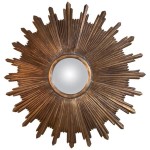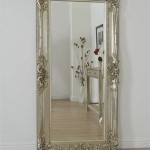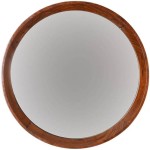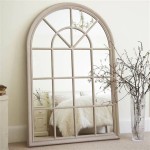How To Hang A Mirror On The Wall
Hanging a mirror on a wall can visually expand a space, brighten a room by reflecting light, and add a decorative touch. However, ensuring the mirror is hung safely and securely requires careful planning and execution. This article details the necessary steps to hang a mirror correctly, from assessing the wall and choosing the right hardware to the actual mounting process.
Assessing the Mirror and Wall
The first step involves a thorough assessment of both the mirror and the wall on which it will be hung. The weight and size of the mirror are crucial factors in determining the appropriate hanging method and hardware. A small, lightweight mirror can be hung using less robust hardware compared to a large, heavy mirror which will require significantly stronger support.
First, accurately measure the dimensions of the mirror, including its height, width, and thickness. Weigh the mirror using a bathroom scale. If the mirror is too large to be safely placed on a scale, consider weighing yourself first, then weighing yourself holding the mirror, and subtracting your weight from the combined weight. This provides a reasonable estimate.
Next, examine the back of the mirror for any existing hanging hardware. Many mirrors come with D-rings, wire, or other mounting mechanisms already attached. Note the type and location of these hardware elements, as they will influence the placement of the corresponding hardware on the wall. If the mirror lacks suitable hanging hardware, you will need to install it yourself, choosing appropriate hardware considering the mirror’s weight.
The wall itself also requires careful inspection. Identify the wall’s material – drywall, plaster, brick, or concrete. Drywall and plaster are relatively common but require specific anchors to support heavier mirrors. Brick and concrete walls are more robust but necessitate different drilling techniques and specialized hardware.
Locate wall studs using a stud finder. Wall studs are vertical framing members that provide the strongest support in a wall. If possible, hanging the mirror directly on a stud is the most secure option. Alternatively, if studs are not accessible in the desired location, appropriate wall anchors designed for the specific wall material must be used to distribute the mirror’s weight.
Consider the condition of the wall. Check for any signs of damage, such as cracks, holes, or water stains. Repair any damage before hanging the mirror to ensure a stable and secure mounting surface. If the wall is uneven, shims may be necessary to ensure the mirror hangs straight and flush against the wall.
Selecting the Appropriate Hardware and Tools
Choosing the right hardware is paramount for the successful and safe hanging of a mirror. The hardware must be capable of supporting the mirror’s weight and compatible with the wall material. Selecting inappropriate hardware can lead to the mirror falling, causing damage or injury.
For lightweight mirrors (under 10 pounds) hung on drywall, picture-hanging hooks with small nails or adhesive strips may suffice. However, for heavier mirrors, wall anchors are essential. Several types of wall anchors are available, each designed for different weight capacities and wall materials.
Drywall anchors, such as plastic expansion anchors, self-drilling anchors, or toggle bolts, are suitable for drywall. Plastic expansion anchors are inexpensive and easy to install but have a lower weight capacity. Self-drilling anchors are more robust and can support heavier loads. Toggle bolts provide the strongest hold in drywall, utilizing a butterfly-shaped anchor that expands behind the wall.
For plaster walls, similar anchors can be used, but care must be taken to avoid cracking the plaster during installation. Pre-drilling pilot holes is often necessary. Brick and concrete walls require specialized anchors designed for masonry. These anchors typically require drilling a hole with a masonry drill bit and inserting a sleeve anchor or a concrete screw.
In addition to wall anchors, appropriate screws or nails are needed to secure the mirror to the wall anchors. The length of the screws should be sufficient to penetrate the wall anchor and provide a secure hold. The head of the screw should be large enough to prevent it from pulling through the mounting hardware on the back of the mirror.
Tools needed for the project include a stud finder, measuring tape, level, pencil, drill (with appropriate drill bits for the wall material), screwdriver (or drill with screwdriver bits), hammer (if using nails), safety glasses, and gloves. A laser level can be helpful for ensuring precise horizontal alignment. A dust mask is advisable when drilling into drywall, plaster, brick, or concrete.
The Hanging Process
Once the mirror and wall have been assessed, and the appropriate hardware and tools have been gathered, the actual hanging process can begin. This process requires precision and care to ensure the mirror is hung securely and straight.
First, determine the desired location for the mirror on the wall. Use a measuring tape to accurately measure the height from the floor to the desired center point of the mirror. Mark the center point on the wall with a pencil. Use a level to draw a horizontal line at that point to serve as a guide for the top edge of the mirror.
If hanging the mirror on a stud, use the stud finder to locate the stud and mark its location on the wall. Align the mounting hardware with the stud and use screws to securely attach the mirror to the stud. Ensure the screws are long enough to penetrate the stud adequately.
If using wall anchors, follow the manufacturer’s instructions for installation. Typically, this involves drilling pilot holes at the marked locations, inserting the wall anchors into the holes, and then tightening the screws to expand the anchors and secure them in place. Ensure the anchors are flush with the wall surface.
For mirrors with D-rings or wire on the back, measure the distance from the top edge of the mirror to the hanging point of the hardware. Transfer this measurement to the wall, marking the location for the screws or hooks that will support the mirror. Use a level to ensure the marks are aligned horizontally.
Carefully lift the mirror and align the mounting hardware on the back with the screws or hooks on the wall. Gently lower the mirror onto the screws or hooks, ensuring that it is securely supported. Step back and visually inspect the mirror to ensure it is hanging straight. Use a level to confirm its alignment both horizontally and vertically.
If the mirror is not hanging straight, make necessary adjustments. If using screws, slightly loosen or tighten them to adjust the position of the mirror. If using hooks, carefully reposition the hooks as needed. Shimming the bottom corners of the mirror can address minor alignment issues due to uneven wall surfaces.
Once the mirror is hanging straight and securely, perform a final check to ensure it is stable. Gently push against the mirror to verify that the mounting hardware is holding firm and that there is no movement. If any instability is detected, re-evaluate the hardware and installation process to ensure adequate support. Ensure that any wire used for hanging is strong enough to support the weight. A wire that is too thin may fail over time, leading to the mirror falling.
Clean any smudges or fingerprints from the mirror surface using a microfiber cloth and glass cleaner. Step back and admire the newly hung mirror, enhancing the room’s aesthetic and functionality.
Safety Precautions
Safety is paramount throughout the entire mirror-hanging process. Taking the necessary precautions can prevent accidents and injuries.
Always wear safety glasses when drilling, hammering, or working with hardware to protect your eyes from debris. Gloves can protect your hands from sharp edges and splinters. If drilling into drywall, plaster, brick, or concrete, wearing a dust mask is advisable to avoid inhaling dust particles.
When lifting heavy mirrors, enlist the help of another person to prevent straining your back or dropping the mirror. Use proper lifting techniques, keeping your back straight and lifting with your legs. Avoid twisting or bending while lifting.
Be mindful of electrical wiring and plumbing pipes within the walls. Use a stud finder with an electrical wire detection feature to avoid drilling into wires. If unsure of the location of wiring or pipes, consult a qualified electrician or plumber.
Use caution when working with power tools. Read and understand the manufacturer’s instructions before operating any tools. Ensure the tools are in good working condition and that the cords are not frayed or damaged. Keep the work area clear of clutter to prevent tripping hazards.
Dispose of any waste materials, such as broken glass or packaging materials, properly. Sharp objects should be placed in a puncture-resistant container to prevent injuries. Clean up the work area thoroughly after completing the project.

How To Hang A Large Or Heavy Mirror

How To Hang A Heavy Full Length Leaner Mirror On The Wall House Of Hepworths

How To Hang A Frameless Mirror On The Wall With Pictures

How To Hang A Heavy Full Length Leaner Mirror On The Wall Hanging Mirrors

How To Hang Mirror On Wall As Hanging
:strip_icc()/ScreenShot2022-04-28at1.12.19PM-e055476c70c6438585fa7c5cd531edcf.png?strip=all)
4 Easy Ways To Hang A Heavy Mirror

Hanging Mirror Over The Door Neutypechic

How To Hang A Frameless Mirror On Wall
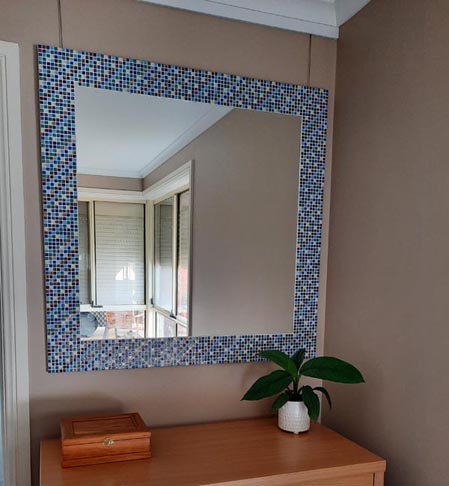
How To Hang A Very Heavy Picture Or Mirror The Best

Easy For Hanging Mirrors And Frames Perfectly Every Time

